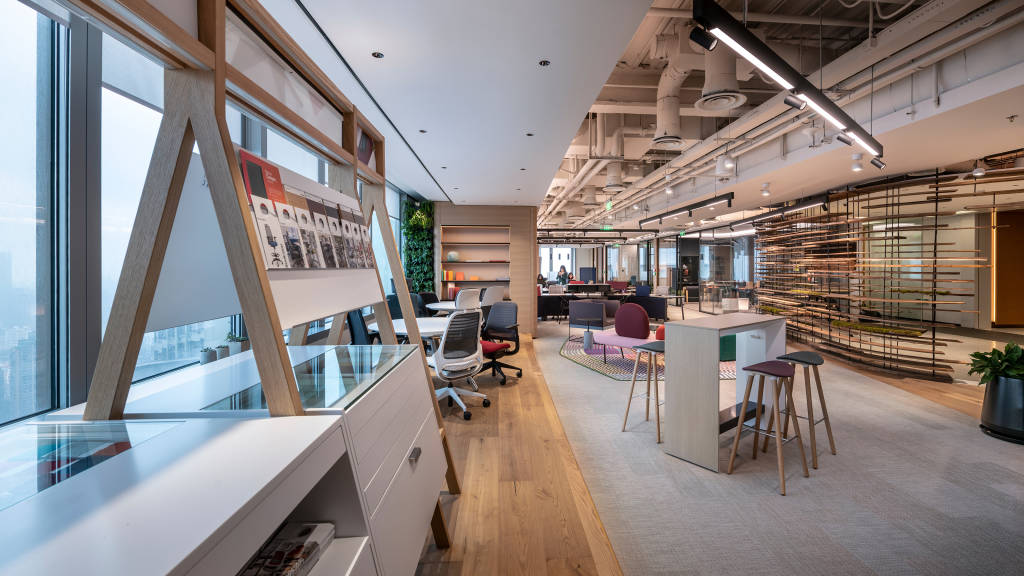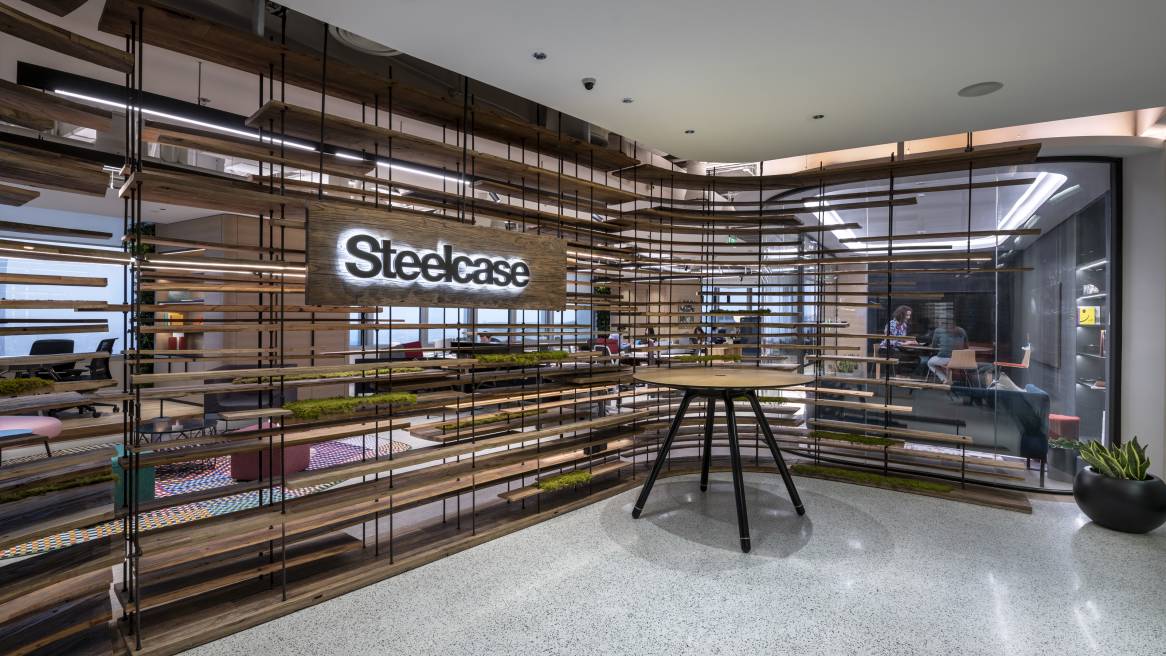ESG in Focus: Inside Steelcase’s Shanghai WorkLife Center, where wellbeing comes first
Innovative. Collaborative. Flexible. Sustainable. When Steelcase’s WorkLife Center in Shanghai opened in 2019, it offered a glimpse into what the workplace of the future really looks like — and it still leads by example, two years on.
Designed by M Moser Associates, the 8,600-squarefoot Shanghai WorkLife Center features everything from air-quality control systems to energy-efficient lighting, versatile work areas, state-of-the-art ergonomics, lush greenery, and flexible creative spaces designed to enhance employee wellbeing and collaboration.
It’s an exercise in Environmental, Social, and Governance (ESG) principles, putting people and the planet first. And as a testament to the company’s investment in health and sustainability, the WorkLife Center became the first in Asia-Pacific to receive both LEED Gold and WELL Silver certifications, in 2018 and 2019, respectively.
While the LEED Standard, administered by the US Green Building Council, focuses on a building’s sustainability and energy efficiency, the International WELL Building Institute’s WELL Standard analyzes the ergonomics, health, mindfulness and wellness of a building’s occupants.
Located within the prestigious HKRI Center in Taikoo Hui, The Shanghai WorkLife Center welcomes employees and visitors with a striking, handcrafted wooden wall made from upcycled wood. To create this pièce de résistance, M Moser transformed reclaimed timber from local “longtang” — the historic wooden lane houses that once made up 60% of Shanghai’s housing — into a layered work of art that channels the creative, flowing spirit of both the city and Steelcase.
“Entering the Steelcase space, the first visual touchpoint acts as a buffer between the ‘outside world’ and our WorkLife Center,” says Noga Lasser, Steelcase APAC EMEA Interior Design. “The layered partition has a rough, incomplete quality that is conceptually derived from our innovation process of evaluating, testing, failing and reiterating for improvement. Its unfinished nature challenges us to imagine its evolution.”
“Derived from the Huangpu River that divides Shanghai, the curved shape provides a transition and creates a moment to take a proverbial breath before entering.”
NOGA LASSERSteelcase Design Manager, Interior Design, Steelcase APAC EMEA

Continuing this ode to nature, M Moser incorporated greenery and timber throughout the open, airy space. The biophilic design not only helps people feel calmer and less stressed, but it also helps to naturally maintain air quality, while adding to the warm and relaxing ambience.
When it comes to the layout, versatile workspaces, meeting rooms and lounges wind around the health- centric WorkCafé, creating a sense of fluidity, connection and community. What’s more, an array of distinct workspaces ensure employees can choose the space that best suits the task at hand.
Throughout the day, staff have the freedom to bounce between high-top counters and individual workstations to the Ideation Hub for brainstorming and demonstrations, Duo Studios for quick one-on- one catch-ups, Focus Rooms for intense solo work, and a private Respite Room for wellbeing and relaxation. The WorkCafé, which serves healthy low- sugar snacks and drinks, offers yet another place to socialize or hold casual meetings. At the same time, purified water stations and recycling bins encourage healthier and more sustainable consumption habits.
At every turn, Steelcase and M Moser considered WorkLife Center’s impact on the environment. On the energy front, unobstructed windows with spectacular views stream in natural light, built-in lighting fixtures feature LED bulbs, and a “Daylight Control” sensor system automatically adjusts 76% of the lighting for maximum efficiency.
From furniture to flooring, M Moser used low- emitting materials free of VOC (volatile organic compounds), glues and adhesives during the construction process to reduce emissions and ensure superior air quality. The center also features HVAC systems, acoustically sealed meeting rooms, an air filtration system, and a real-time air quality monitoring system that displays PM2.5, TVOC, carbon dioxide, temperature, and humidity.
What’s good for employees and the environment is good for business, too. In its research on wellbeing, Steelcase has found a direct link between staff wellbeing and productivity. Essentially, workspaces have the power to improve human health, mental and emotional wellness and create a sense of community. And when people feel better at work? Their performance and morale measurably improve.
“When it comes to workplace design, wellbeing and sustainability are not just buzzwords,” says Lasser. “They are essential ingredients in the Steelcase recipe.”
To download pdf version, click here.


